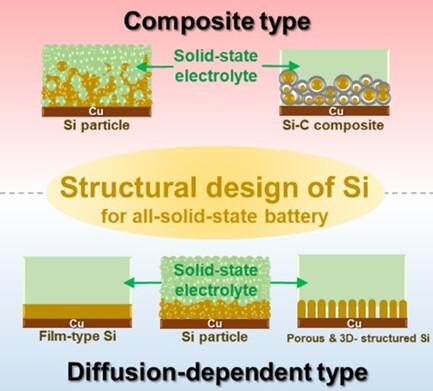A Rational Design of Silicon-Based Anode for All-Solid-State Lithium-Ion Batteries: A Review
Abstract
Silicon is a promising alternative to the conventional graphite anode for lithium-ion batteries (LIBs). However, pulverization of Si particles caused by volume expansion and formation of unstable solid electrolyte interphase can lead to several failure behaviors of LIBs. In contrast to LIBs employing liquid electrolytes, all-solid-state batteries (ASSBs) could exhibit totally different interfacial environments over Si anode materials, in terms of wetting properties of the Si surface by electrolyte. This characteristic interface of Si anode with solid-state electrolyte (SSE) can change the electrochemical stability and long-term life cycle performance of Si. In respect of commercialization, the incorporation of Si anode into ASSB could be the strongest approach to overcome the intrinsic limitations of anode materials. However, large contact losses between Si and SSE have to be handled in order to provide good electrochemical performance and stability. In this review, failure behaviors of Si anode within the SSE with proper characterization method is addressed and several design strategies for incorporation of Si anode into ASSB based on the following classifications are introduced: composite type and diffusion-dependent type Si anodes. From this review, the possibility of Si anode for practical application to next-generation ASSB by regulating its chemical and mechanical properties is suggested.


 求助内容:
求助内容: 应助结果提醒方式:
应助结果提醒方式:


